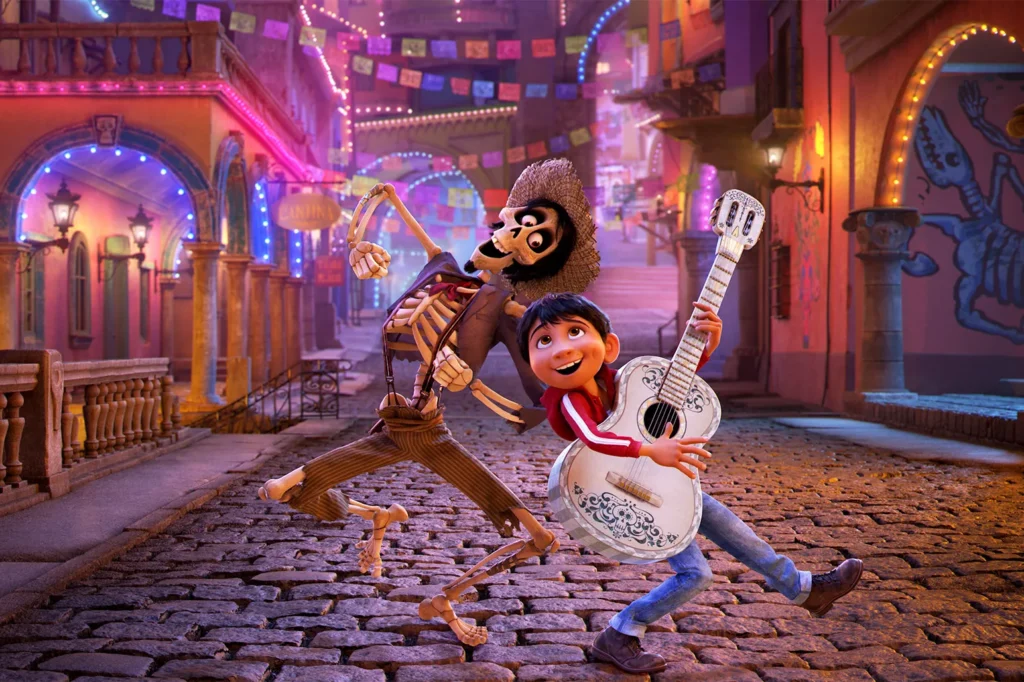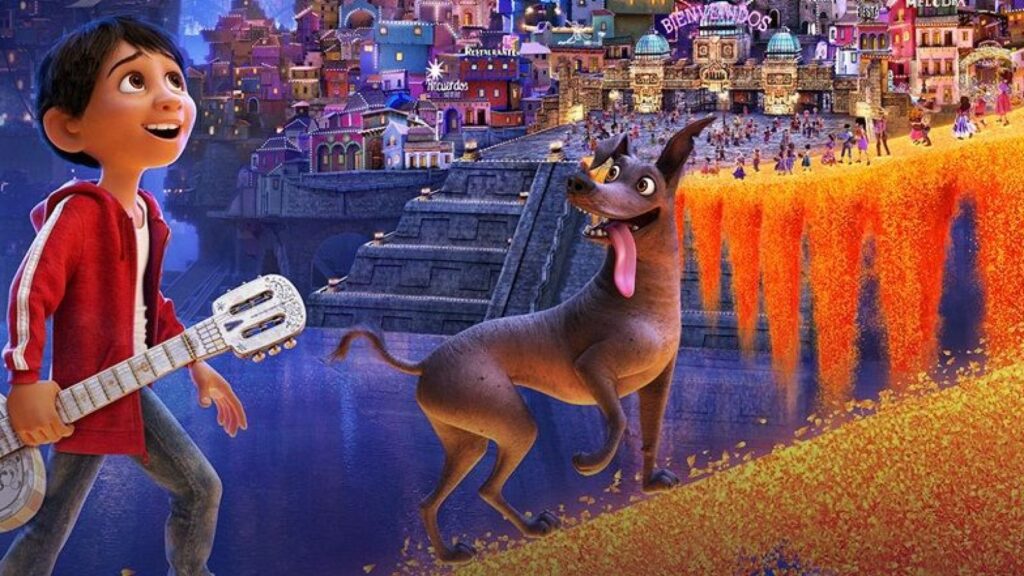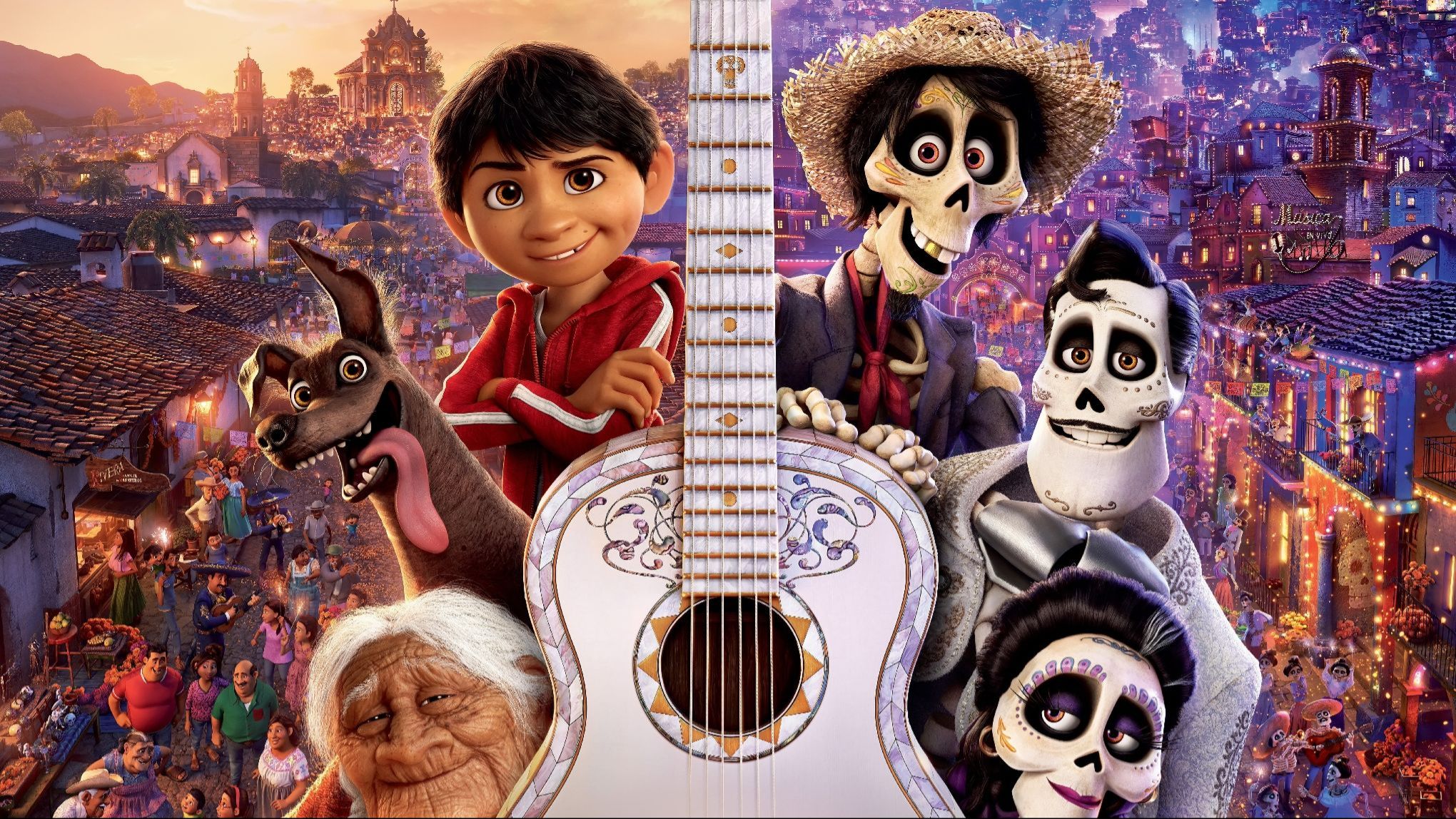Introduction
In the pantheon of animated films, few have captured the hearts and imaginations of audiences worldwide quite like Coco, the 2017 masterpiece from Pixar Animation Studios. Directed by Lee Unkrich and co-directed by Adrian Molina, this computer-animated fantasy film delves deep into the rich tapestry of Mexican traditions, particularly the Day of the Dead (Día de los Muertos), while weaving a poignant tale of family, legacy, and the power of music. Released on November 22, 2017, in the United States, Coco not only achieved monumental box office success, grossing over $814 million globally, but also garnered universal acclaim for its stunning visuals, emotional depth, and respectful portrayal of Mexican culture.
At its core, Coco is a story about chasing dreams against familial expectations, set against the backdrop of a vibrant afterlife inspired by Mexican folklore. The film follows young Miguel Rivera, a boy with a passion for music in a family that has banned it for generations. Through a magical mishap, Miguel finds himself in the Land of the Dead, embarking on a journey that uncovers family secrets and reaffirms the bonds that transcend life and death.
What sets Coco apart is its commitment to authenticity—Pixar went to great lengths to ensure cultural accuracy, consulting with Mexican artists, musicians, and cultural experts. This dedication shines through in every frame, from the intricate designs of the alebrijes (fantastical spirit animals) to the heartfelt renditions of traditional Mexican songs.
The film’s impact extends beyond entertainment; it has become a cultural touchstone, introducing global audiences to the beauty and significance of Día de los Muertos. Celebrated for its themes of remembrance, forgiveness, and identity, Coco resonates on a personal level for many, especially those from Latin American backgrounds who see their heritage reflected on screen. With an all-Latino voice casta first for a major animated feature with a nine-figure budget—the movie broke barriers and set new standards for representation in Hollywood.
As we explore the full details of Coco, from its intricate plot and memorable characters to its groundbreaking production and lasting legacy, it’s clear why this film continues to enchant viewers years after its release. Spanning themes of mortality with joy and color, Coco reminds us that our stories live on through those who remember us. In the following sections, we’ll dive into the narrative, the creative process behind the scenes, and the film’s profound cultural reverberations, painting a comprehensive picture of this animated gem.

Plot Summary
The story of Coco unfolds in the quaint Mexican town of Santa Cecilia, a place steeped in tradition and family history. We are introduced to the Rivera family through a vibrant papel picado (perforated paper) sequence that recounts their legacy. Generations ago, Imelda Rivera, a strong-willed young woman, married a musician who abandoned her and their infant daughter, Coco, to pursue fame. Heartbroken and determined to provide for her family, Imelda bans music forever and establishes a successful shoemaking business, a trade passed down through the years.
Fast forward to the present, where 12-year-old Miguel Rivera lives with his extended family, including his parents, Enrique and Luisa, his grandmother Elena (Abuelita), and the elderly Coco, who is fading into dementia. Despite the strict no-music rule enforced by Abuelita, Miguel harbors a secret passion for music. He idolizes the legendary singer and actor Ernesto de la Cruz, whose films and songs he watches obsessively in a hidden attic shrine. Miguel teaches himself guitar by mimicking Ernesto’s performances, dreaming of becoming a musician himself.
The plot kicks into high gear on Día de los Muertos, a holiday when families honor their deceased loved ones with ofrendas (altars) adorned with photos, food, and marigold petals to guide spirits home. Miguel discovers a torn photo on the family ofrenda showing Imelda, young Coco, and a headless man holding Ernesto’s iconic guitar. Convinced that Ernesto is his great-great-grandfather, Miguel excitedly shares his musical talents with his family, only to have Abuelita smash his homemade guitar in a fit of rage.
Devastated but undeterred, Miguel runs away and breaks into Ernesto’s mausoleum to borrow the famous guitar for a local talent show. Upon strumming it, Miguel becomes invisible to the living and visible only to the spirits crossing over from the Land of the Dead. His deceased relatives, including Imelda, spot him and explain that he’s been cursed for stealing from the dead. To return home before sunrise—or risk becoming a spirit forever—Miguel must receive a family blessing, typically granted via a marigold petal.
Imelda offers the blessing on the condition that Miguel abandons music, but he refuses and flees into the bustling Land of the Dead, a dazzling metropolis of stacked towers, glowing lights, and endless festivities. There, he meets Héctor, a charming but forgotten skeleton trickster who dreams of crossing the marigold bridge to visit his daughter in the living world before she forgets him, causing him to suffer “final death.” In exchange for putting Héctor’s photo on an ofrenda, Héctor helps Miguel track down Ernesto.
Their adventure takes them through the vibrant underworld: from a talent competition where Miguel disguises himself as a skeleton to gain entry to Ernesto’s lavish party, to encounters with colorful alebrijes like Dante (Miguel’s loyal Xoloitzcuintle dog) and Pepita (Imelda’s spirit guide, a massive winged jaguar). Along the way, Miguel’s living family, led by Imelda, pursues him, desperate to bring him back.
At Ernesto’s mansion, Miguel is thrilled to meet his idol, who welcomes him as family. However, Héctor interrupts, revealing he was Ernesto’s partner. Flashbacks show that Héctor wanted to return home to his family, but Ernesto poisoned him to steal his songs and guitar, building his empire on Héctor’s talents. Enraged, Ernesto seizes Héctor’s photo and tosses both him and Miguel into a cenote (sinkhole).
In the pit, Héctor discloses that his daughter is Coco, making him Miguel’s true great-great-grandfather. Rescued by Imelda and the family, Miguel helps expose Ernesto during his sunrise concert. The villain is unmasked when his murder is broadcast via a replay of his old film, and he’s crushed by a giant bell—echoing his real-life death. Though Héctor’s photo is lost in the chaos, Imelda and Héctor reconcile after years of bitterness.
As Héctor fades, he and Imelda bless Miguel without conditions, sending him back. In the living world, Miguel rushes to Coco and plays “Remember Me,” Héctor’s lullaby that Ernesto had popularized as a bombastic hit. The song revives Coco’s memories; she shares letters and the missing photo piece proving Héctor’s authorship, restoring his legacy.
One year later, the Rivera family embraces music. The ofrenda now honors Héctor, and in the Land of the Dead, he reunites with Coco, who has passed away. The worlds connect harmoniously as Miguel performs for his family, living and dead. The film ends on a triumphant note, emphasizing that true legacy lies in love and remembrance, not fame.
This intricate plot masterfully blends adventure, mystery, and emotion, clocking in at 105 minutes. It avoids clichés by grounding fantastical elements in real cultural practices, creating a narrative that’s both universal and deeply specific.
Miguel Rivera, the young aspiring musician

Characters
Coco boasts a rich ensemble of characters, each brought to life by a talented voice cast that emphasizes authenticity and emotional nuance. The protagonist, Miguel Rivera (voiced by Anthony Gonzalez), is a wide-eyed 12-year-old boy whose passion for music clashes with his family’s traditions. Gonzalez, who was cast after a lengthy audition process, infuses Miguel with youthful energy and heartfelt sincerity, drawing from his own experiences as a young performer. Miguel’s journey from rebellious child to family reconciler is the film’s emotional anchor.
Héctor (Gael García Bernal) is the charismatic trickster skeleton who becomes Miguel’s guide and eventual great-great-grandfather. Bernal’s performance captures Héctor’s roguish charm and underlying vulnerability, making his arc from forgotten soul to redeemed family man profoundly moving. Ernesto de la Cruz (Benjamin Bratt), the glamorous but villainous idol, is a suave showman whose facade crumbles to reveal a ruthless opportunist. Bratt draws inspiration from iconic Mexican entertainers, adding layers of charisma and menace.
The matriarchal figures are equally compelling. Mamá Imelda (Alanna Ubach) is the stern founder of the family’s shoemaking empire and music ban, voiced with fierce determination and hidden tenderness. Abuelita Elena (Renée Victor) enforces the rules with a chancla (slipper) in hand, representing generational trauma passed down. Mamá Coco (Ana Ofelia Murguía), the titular character, is a frail elderly woman whose faded memories hold the key to the family’s healing; her subtle performance evokes quiet poignancy.
Supporting characters add depth and humor. Dante, Miguel’s loyal but clumsy Xolo dog, transforms into a glowing alebrije, providing comic relief. Pepita, Imelda’s alebrije, is a majestic protector. The extended Rivera family in both worlds—including Papá Julio (Alfonso Arau), Tía Rosita (Selene Luna), and the twin uncles Oscar and Felipe (Herbert Sigüenza)—flesh out the theme of familial interconnectedness. Cameos like Frida Kahlo (Natalia Cordova-Buckley) inject cultural flair.
The all-Latino cast, a milestone for Pixar, ensures cultural resonance, with actors like Bratt and Bernal bringing personal connections to their roles. This diversity not only enhances authenticity but also broadens the film’s appeal, making characters feel like extensions of real families.
Production and Development
The genesis of Coco dates back to 2010, when director Lee Unkrich, fresh off Toy Story 3, pitched an idea inspired by his fascination with Día de los Muertos. Initially conceived as a story about an American boy discovering his Mexican roots amid his mother’s passing, the concept evolved to center on a fully Mexican protagonist to avoid cultural insensitivity. Unkrich, aware of the responsibility, led extensive research trips to Mexico, immersing the team in family homes, graveyards, and festivals in places like Oaxaca and Guanajuato.
Pixar faced challenges in portraying a culture not their own. In 2013, Disney’s attempt to trademark “Día de los Muertos” sparked backlash, accused of commodifying a sacred tradition. A petition and satirical cartoons by artist Lalo Alcaraz prompted withdrawal, and Pixar hired Alcaraz, playwright Octavio Solis, and consultant Marcela Davison Aviles to guide authenticity. Their input shaped everything from character designs to the afterlife’s bureaucracy.
Story development was arduous, with early drafts featuring different afterlife rules and a singing curse on the family. Adrian Molina, initially a storyboard artist, was promoted to co-director and co-writer, bringing his Mexican-American perspective. The screenplay by Molina and Matthew Aldrich balanced humor, adventure, and tears, drawing from films like Spirited Away for magical realism and John Wick for action beats.
Casting prioritized Latino talent. Anthony Gonzalez was selected after years of auditions, replacing an earlier actor whose voice changed. Gael García Bernal and Benjamin Bratt joined in 2016, with Bratt viewing Ernesto as a “Mexican Frank Sinatra.” Production began in 2016 with a $175-225 million budget, involving innovative animation for skeletons and marigolds. The team overcame technical hurdles, like rendering a million lights, to create a visually stunning world.
Unkrich’s final directorial effort before retiring, Coco exemplifies Pixar’s storytelling prowess, blending innovation with cultural respect.
Miguel and Dante gazing at the magnificent Land of the Dead
Animation and Visuals
Pixar’s animation in Coco is a technical marvel, contrasting the warm, earthy tones of Santa Cecilia with the neon-drenched spectacle of the Land of the Dead. The living world feels intimate and lived-in, with textured adobe walls and cobblestone streets modeled after real Mexican towns. In contrast, the afterlife is a vertical wonderland of towering structures, inspired by Guanajuato’s hillside architecture, illuminated by vibrant lights and bustling with skeletal inhabitants.
Animating skeletons posed unique challenges: without muscles or skin, Pixar developed new rigging systems for bone movements, allowing for expressive gestures and clothing interactions. Characters like Héctor have loose joints for comedic effect, while crowds used simplified models for efficiency. The marigold bridge, a glowing pathway of petals, required advanced simulations to react dynamically to footsteps.
Alebrijes like Dante and Pepita blend Mexican folk art with fantasy—Dante’s tongue was animated like a Finding Dory tentacle for humor. Mama Coco’s wrinkled face used layered geometry for realism. Global illumination techniques rendered scenes with millions of light points, pushing Pixar’s pipeline to its limits.
The visuals not only dazzle but serve the story, using color to symbolize life, death, and memory. This blend of innovation and artistry earned Coco praise as one of Pixar’s most beautiful films.

Music and Soundtrack
Music is the soul of Coco, composed by Michael Giacchino with songs by Robert Lopez, Kristen Anderson-Lopez, Germaine Franco, and Adrian Molina. The Oscar-winning “Remember Me” evolves from lullaby to showstopper, underscoring themes of legacy. Other tracks like “Un Poco Loco” and “Proud Corazón” infuse joy and cultural flavor.
Giacchino’s score weaves mariachi elements with orchestral swells, enhancing emotional beats. The soundtrack, featuring traditional Mexican instruments, respects heritage while advancing the plot. Antonio Sol provides Ernesto’s singing voice, adding authenticity.
This musical integration makes Coco Pixar’s most song-driven film, celebrating music as a bridge between generations.
Release and Marketing
Coco premiered at the Morelia International Film Festival on October 20, 2017, before a Mexican release on October 27 and U.S. debut on November 22. Marketing highlighted cultural themes, with trailers showcasing music and visuals. In Mexico, promotions included contests and murals.
Theatrical runs paired it with Olaf’s Frozen Adventure, later removed due to complaints. Re-releases in 2023 celebrated Disney’s centenary. The campaign emphasized family and tradition, contributing to its success.
Box Office Success
With a $175-225 million budget, Coco earned $814.3 million worldwide. In Mexico, it shattered records, grossing $57.8 million and becoming the highest-earning film ever. The U.S. opening weekend netted $50.8 million, topping Thanksgiving charts. Internationally, China surprised with $189.2 million, while other markets added to its global triumph, proving its universal appeal.
Critical Reception
Critics hailed Coco as a triumph. Roger Ebert’s site called it a “sprightly story” with emotional depth. Rotten Tomatoes scores 97%, praising animation, music, and cultural respect. Reviewers noted its heartfelt exploration of death, family, and identity, comparing it favorably to Up and Inside Out. Mexican audiences appreciated the accurate portrayal, boosting cultural pride.
Awards and Accolades
Coco swept awards, winning two Oscars: Best Animated Feature and Best Original Song (“Remember Me”). It also took Golden Globes, BAFTAs, and Annie Awards in multiple categories, including animation, voice acting, and music. The film’s accolades underscore its excellence and cultural significance.
Themes and Analysis
Coco explores remembrance, as spirits fade when forgotten, symbolizing cultural preservation. Family reconciliation heals generational wounds, while music represents passion versus tradition. Identity and heritage are central, with Miguel’s journey affirming self-expression within community. Analytically, it addresses mortality with optimism, using Día de los Muertos to teach about loss and legacy.
Cultural Representation and Impact
Pixar’s commitment to authenticity—through consultants and research—resulted in a respectful depiction of Mexican culture, boosting tourism to sites like Michoacán. It increased global awareness of Día de los Muertos, inspiring celebrations and art. For Latinos, it provided rare representation, fostering pride and dialogue about heritage.
Controversies were minimal post-trademark fiasco, with the film largely praised for sensitivity.
Home Media and Legacy
Released on home media in February 2018, including Blu-ray and digital, with extras like deleted scenes and making-of features. Legacy includes theme park attractions, merchandise, and ongoing cultural influence. Coco inspired a Broadway musical and spin-offs, cementing its place in animation history.
Conclusion
Coco stands as a testament to storytelling’s power, blending heart, humor, and heritage into an unforgettable experience. Its detailed world, compelling characters, and profound messages continue to resonate, reminding us to remember our roots while pursuing our dreams. In a world of fleeting fame, Coco celebrates enduring love.




